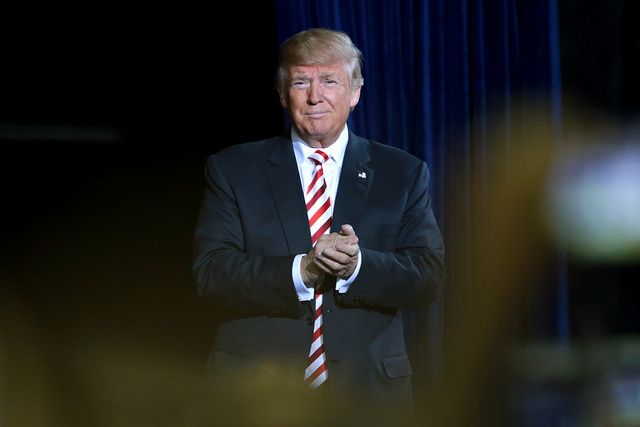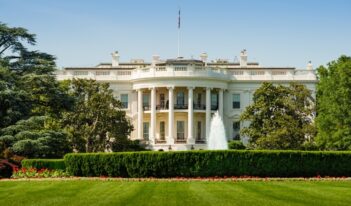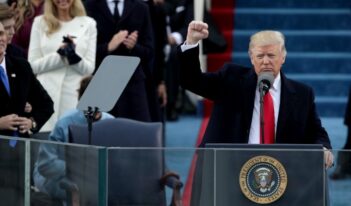
How the incoming President might shape his strategy in the regulatory sphere.
With the inauguration of Donald Trump, conservatives are pining for perhaps the biggest deregulatory push since the Reagan Administration, while progressives are fretting that many public health and safety regulations from the last eight years could be undone. And although the specifics of President-elect Trump’s regulatory vision will likely become clearer over the coming months, his campaign and transition team have already provided some clues about his views concerning federal regulation and plans for reform.
Overall, President-elect Trump appears to be advocating for steep reductions in the number and magnitude of federal rules. During the presidential campaign, he noted, that his administration will be “cutting the regulation at a tremendous clip. I would say 70 percent of regulations can go.” Later, during a roundtable with farmers in Florida, he increased that figure to 80 percent. These remarks beg several questions. 70 to 80 percent of what? Do these goals refer to total regulations, major rules, or the magnitude of regulatory burdens? What is the time period for these reductions? How will his administration make these reductions?
President-elect Trump answered some of these questions during one of his first statements after the election: “On regulation, I will formulate a rule which says for every one new regulation, two old regulations must be eliminated.” Policymakers refer to such limits as a form of regulatory budgeting, a concept that requires officials to track the private-sector costs imposed by regulation in a manner similar to how federal agencies track their own spending on government programs. If President-elect Trump implements a one-in, two-out policy, the United States would operate under a regulatory budget for the first time ever.
Other nations—including Canada, the United Kingdom, and Australia—have implemented regulatory budgets recently. In 2016, the United Kingdom moved to a one-in, three-out system for regulation, in an effort to cut £10 billion in regulatory costs. Critics have noted, however, that the British system is riddled with loopholes, and that a similar system would be difficult to implement in the United States.
The details of a regulatory budget matter greatly. If a budget applies to all types of final rules—regardless of their scope or financial impact—regulators could be forced to rescind between 6,000 and 7,000 existing regulations each year, considering that agencies issued 3,853 final rules in 2016. If the regulatory budget covers just major rules, that figure shrinks to roughly 200 rules, assuming the regulatory output in 2016. If the regulatory budget applies only to rules with a price tag of a billion dollars or more—or what are known as “high-impact” rules—agency officials could meet the requirements of a one-in, two-out policy by amending or removing just four to six regulations each year.
As evidenced by its international implementation, the idea of a federal government controlling regulatory output is hardly novel or radical. In 1980, President Carter’s Administration outlined the potential for a budget and concluded that “tools like the regulatory budget may have to be developed.” Because political winds can impact the timing for release or delay of federal rules, the nation already operates under a de facto budget. The Trump Administration could argue that processes already occurring behind closed doors should be transformed into a formal regulatory budget policy.
If the United States moves toward a formal regulatory budget, regulators will face the challenge of selecting existing rules to review and rescind. President Obama and several of his predecessors already requested that agencies look back at existing regulations to find ones “to modify, streamline, expand, or repeal.” Although President Obama’s efforts resulted in some substantive reviews, regulators often added new regulations and costs rather than trimming them. Does President-elect Trump leave retrospective review in the hands of cabinet agencies, or task other governmental bodies such as the Congressional Budget Office or the Bureau of Economic Analysis with the job of reviewing more than 170,000 pages of past rules to determine candidates for rescission? Regardless of who is in charge, a functioning regulatory budget depends upon a robust retrospective review effort.
Beyond the mechanics of a regulatory budget, the Trump Administration will have wide latitude to amend the regulatory mechanics in the executive branch. His legal advisors and the Office of Information and Regulatory Affairs (OIRA)—a White House body that oversees new regulations promulgated by federal agencies—likely will formulate executive orders implementing a new vision for regulatory reform. In addition, Trump Administration officials may prioritize review of OIRA’s guidance document on regulatory analysis, OMB Circular A-4. For example, this document might be amended to address concerns conservatives have noted with weighing international benefits in regulatory benefit-cost analysis or with counting so-called private benefits like consumer energy savings. These issues, among others, could be addressed through a few simple changes to Circular A-4.
Another key piece of President-elect Trump’s regulatory vision will turn on how the White House and environmental regulators address the social cost of carbon. Developed by the Obama Administration as a tool for estimating the benefits of regulating greenhouse gas emissions, the current figure for saving one ton of carbon emissions totals $42 in the year 2020. Could the Trump Administration alter the monetary value and adjust the discount rate? Already, a member of the transition team has remarked, that in the Trump Administration the social cost of carbon “would certainly be much lower than what the Obama administration has been using.” Should the Trump Administration revise the social cost of carbon in this manner, it would be more difficult for the U.S. Environmental Protection Agency and other regulators to justify the regulation of greenhouse gases, absent large co-benefits derived from reducing other forms of pollution.
Finally, conservative think tanks and members of Congress will push the Trump Administration to enhance oversight of independent agencies, suggesting that the Administration require them to submit regulations to OIRA for review. Although OIRA already reviews regulations issued by most federal agencies, such as the U.S. Department of Agriculture and EPA, a longstanding legal debate persists over whether the White House should review the work of independent agencies, such as the Federal Reserve and the U.S. Securities and Exchange Commission.
During the presidential campaign, notions of how a Trump Administration would address regulation remained vague. After a new OIRA Administrator is confirmed and the Trump Administration begins to issue executive orders, the nation will have a better understanding of the President-elect’s regulatory agenda. These details will determine whether the Trump Administration’s regulatory vision will follow those of previous Republican presidents, or whether it will follow an entirely novel trajectory.
The image of Donald Trump is the property of the Gage Skidmore and is used under a Creative Commons License.




